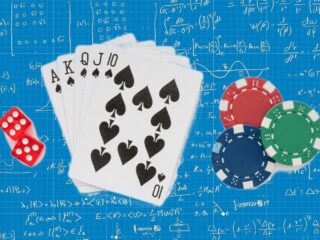
Slot games are among the most popular forms of entertainment in casinos, both online and offline. While they appear to be simple games of luck, there is a complex system of mathematics working behind the scenes. This math influences how often players win, how much they win, and the overall design of the game. Understanding the hidden math behind slot games can give players a better insight into how the games work and what to expect when spinning the reels.
The Basics of Slot Game Mathematics
At the core of every slot game is something known as a Random Number Generator (RNG). The RNG ensures that every spin on a slot machine is completely random and independent from the previous one. This means that the outcome of each spin is unpredictable, and it is impossible to influence or predict the result.
The RNG uses algorithms to generate thousands of random numbers every second, even when no one is playing the game. When a player presses the spin button, the machine picks a number generated by the RNG and translates it into the outcome seen on the screen, such as a combination of symbols.
This randomness ensures fairness in slot games, but it’s also important to know that every slot game is designed with certain probabilities and payouts in mind. These mathematical principles determine how often players are likely to win and how much they can win.
Return to Player (RTP) and House Edge
One of the most important concepts in situs slot gacor malam ini game math is the Return to Player (RTP) percentage. RTP refers to the amount of money that a slot machine is expected to return to players over a long period. For example, if a game has an RTP of 95%, it means that, on average, players will get back $95 for every $100 wagered.
It’s important to note that RTP is calculated over thousands or even millions of spins, so individual results may vary greatly in the short term. Some sessions may result in big wins, while others could lead to losses.
Volatility and Slot Variance
Another critical aspect of slot game math is volatility or variance. This term refers to how often and how much a slot game pays out. There are generally three types of volatility: low, medium, and high.
- Low volatility slots pay out small amounts frequently. These games are ideal for players who prefer steady, smaller wins and want to extend their gameplay sessions.
- High volatility slots, on the other hand, offer larger payouts but less frequently. These games are riskier because they can go through long periods without any significant wins, but when they do pay out, the rewards can be substantial.
- Medium volatility slots fall somewhere in between, offering a balance between frequent small wins and the occasional big payout.
The Role of Paylines and Symbols
Paylines are another important factor in the math behind slot games. A payline is the specific pattern of symbols that must appear on the reels for a player to win. Traditional slot games often have a single payline, while modern video slots can have hundreds of ways to win.
The math behind the paytable of a slot game, which lists the payouts for each symbol combination, is carefully calculated to ensure that the game remains profitable for the casino while still offering players the chance to win.
How Bonus Features Affect the Game?
Bonus features, such as free spins, multipliers, and special symbols like wilds and scatters, add extra layers of complexity to the math behind slot games.

These features are designed to keep the gameplay exciting and provide players with additional opportunities to win. However, these bonuses are also factored into the overall RTP of the game.
Chasing Wins: The Importance of Bankroll Management
While understanding the math behind slot gacor hari ini games can provide players with a clearer idea of how the games work, it’s important to remember that slots are games of chance. No amount of strategy or knowledge can guarantee a win. Therefore, players should always practice responsible gaming and set limits on how much they are willing to spend.
Conclusion
The math behind slot games is both complex and fascinating. From RNGs and RTP percentages to paylines and bonus features, every element of a slot game is carefully designed to create an exciting experience for players while ensuring fairness and profitability for casinos. While players can’t change the outcome of a spin, understanding the hidden math behind slot games can give them a better appreciation of the mechanics at play and help them make more informed decisions when playing.




